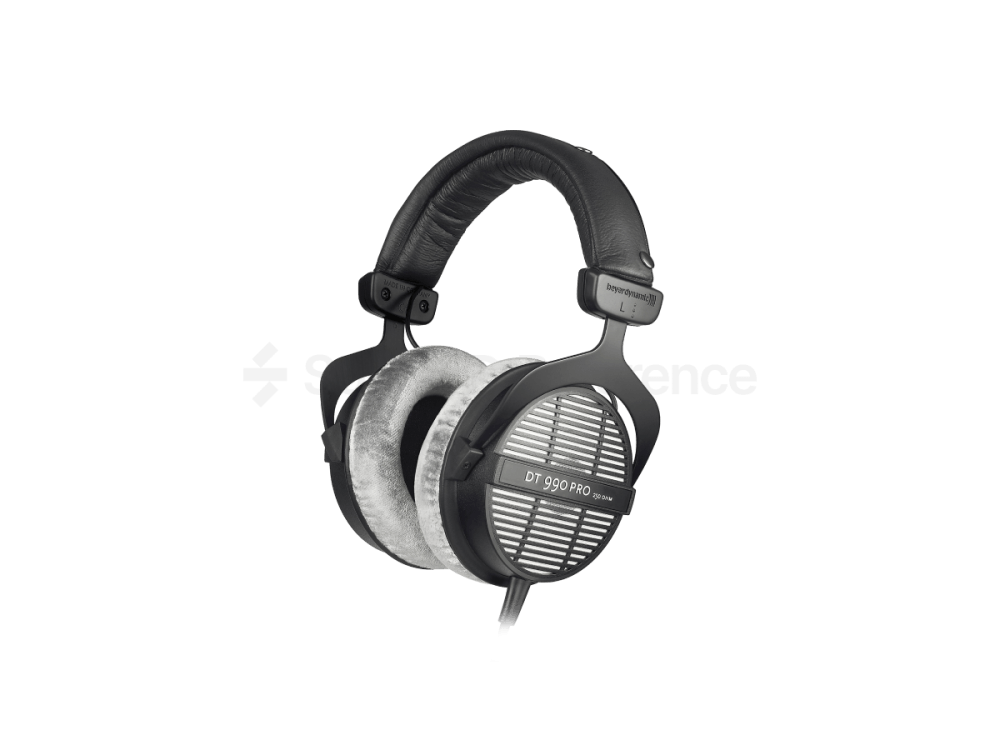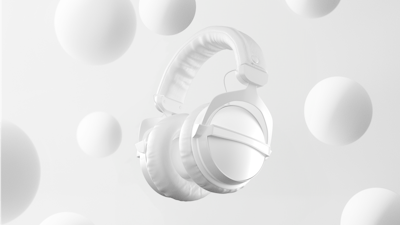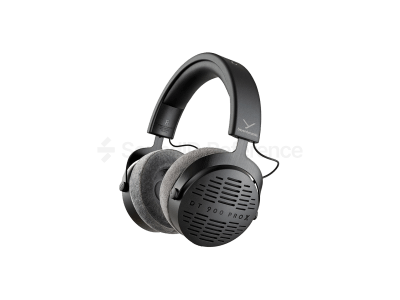Beyerdynamic DT 990 Pro is one of the “old guard” open-back studio headphones from the 90-ies which was at the time pitted against AKG K701 and Sennheiser HD 600. Despite the respectable age of the design, the DT 990 Pro is often found in many studios and often users recommend them as a mid price point open-back studio headphone. Let’s find out what the DT 990 Pro offers to a sound engineer and reflect how they stack up to today’s offerings.
- Priced really good
- Lightweight
- Built to last
- Most of the parts are replaceable
Pros list with SoundID Reference calibration
- Neutral frequency response
- U-curve sound signature
- The cable cannot be replaced
Unless you listen exclusively on low volume, then the DT 990 Pro will require something beefier than the output of your phone or computer. The story here is similar to that of DT 880 Pro 250 Ohm or DT 770 Pro 250 Ohm versions – even though the nominal impedance is lower than, for example, Sennheiser HD 650, these are less sensitive and thus harder to drive. Most modern audio interfaces should have no problem reaching dangerous SPL’s with the DT 990 Pro, the same goes for the majority of dedicated headphone amplifiers. The 250 Ohm does present a nice benefit of the DT 990 Pro being rather insensitive to high output impedance.
Like its sister headphone DT 770 Pro, the DT 990 Pro won’t be winning any beauty contests. They do feel sturdy and you won’t have to babysit them. The ear-cups are made out of plastic, but the U-frame holding the ear-cups is metal, which should take any abuse from everyday studio work. Ear pads, which are replaceable, are made from velour, which hugs the sides of your head without any pronounced pressure points. Do keep in mind that with use the ear pads will deform and soak up the sweat you’ve been producing to finish those projects in time! Swap them out every year or so, as worn ear-pads change the sound of your DT 990 Pro and there’s always the smell…
DT 990 Pro bears a similarity to its siblings, the DT 770 Pro & DT 880 Pro, and exhibits some excitement towards the top and low end. One could actually call this a U-curve. The treble iceberg which starts at around 6.5 kHz makes it hard to judge any instrument overtones. Despite the manufacturer’s recommendation, it’s very hard to imagine the DT 990 Pro to be suitable for mastering. The emphasized highs might make it easier to pick out some issues in the mix, but the price to pay is an overall skewed presentation which will force the engineers’ hand and tire their ears.
Overall, DT 990 Pro does well here, there is some imbalance down low which shouldn’t present a problem. The slight discrepancy in the highs wasn’t audible in our listening tests.
The DT 990 Pro is very comfortable to wear. These headphones rely on their clamping force to stay on one’s head, but the clamp is well distributed thanks to the large ear pads. The headband presses on the top of the head very lightly and shouldn’t cause discomfort.
At around €139/$159, they’re decent entry-level headphones. However, the sound signature is very colored and serious work can only be done if one has spent considerable time learning their peculiarities.
As expected from an open-back headphone from the last century, the DT 990 performs nicely overall, but the driver starts to distort in low-bass, limiting its use for sub-bass monitoring. Most of the distortion profile is dominated by 2nd order which means that even when driven hard the sound will remain rather pleasant to hear.
Overall they do translate well enough between different listeners, however, there’s a bit of an issue in the low end in the form of a resonance, that’s rather tricky to get rid of. Also, there’s a deviation expected in the 3 – 5 kHz range, so for some these headphones may sound a bit harsh. DT 880 Pro does considerably better here, and we believe that it justifies the price premium over DT 990 Pro.
How much do they differ pair to pair in terms of frequency response?Overall, they stay pretty consistent, with few outliers here and there, but the general trend stays the same, which means that the average headphone profile should do a nice job.
Rating
Conclusion
Durable, lightweight, sits comfortably on the head and most of the parts are replaceable. DT 990 Pro is good, especially for the price. However, a calibrated pair of DT 880 Pro is near perfect and well worth the €50 premium in our opinion.
To calibrate your DT 990 Pros, purchase headphone calibration software SoundID Reference or send them in for individual calibration.
For more information about beyerdynamic headphones, continue reading our reviews – DT 240 Pro, DT 770 Pro, DT 900 Pro X, and DT 880 Pro.
Final Rating
Calibration Enabled
Calibration






